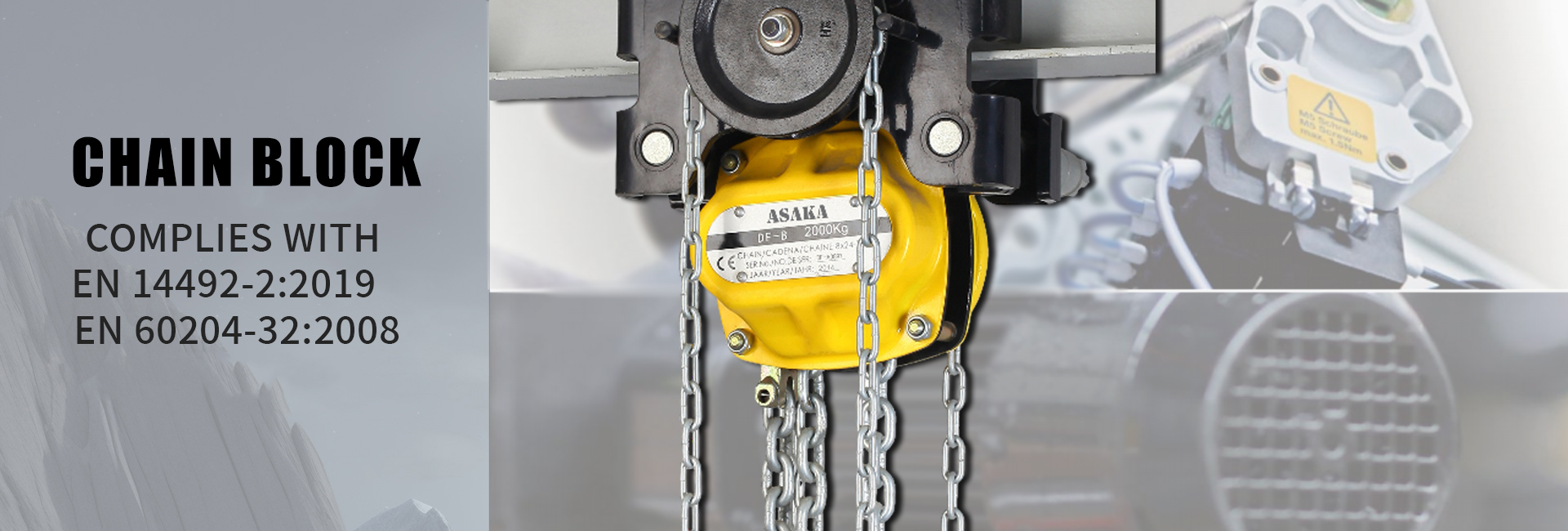Mastering Safe Operations: A Comprehensive Guide on How to Use a Chain Hoist
Chain hoists are versatile tools widely used for lifting heavy objects, but their safe and efficient operation requires proper understanding and adherence to guidelines. In this comprehensive guide, we'll walk you through the essential steps to master the art of using a chain hoist for lifting tasks.
1. Tonnage Verification and Overload Prohibition:
Before lifting any heavy object, ensure the weight is verified, and choose a hand chain hoist with an appropriate tonnage. Strictly prohibit overload lifting, and avoid lifting objects buried underground or condensed on the ground.
2. Pre-Use Inspection:
Before each use, conduct a thorough inspection of the chain hoist to confirm it is in good condition. Regular inspections ensure the equipment's reliability and safety during lifting operations.
3. Hook and Lifting Chain Check:
Before lifting, check the upper and lower hooks for firm attachment. Ensure the hooks are not skewed and there are no heavy objects on top of them. The lifting chains should hang vertically with no twisted links, preventing chain jams that could affect normal machine operation.
4. Gradual Lifting and Comprehensive Check:
Initiate lifting slowly and check the stress on both the equipment and heavy objects after the lifting chain is tightened. Pay special attention to any kinks in the lifting chain, adjusting them if necessary before proceeding with the operation.
5. Proper Hand Chain Operation:
Stand in the same plane as the hand chain wheel during operation. Pull the hand chain clockwise to raise the weight and pull it in the opposite direction to lower the weight gradually. Avoid diagonal pulling to prevent chain entanglement and twisting.
6. Even and Gentle Force:
Maintain even and gentle force during the lifting process to avoid chain jumping or snapping. If the hand chain cannot be pulled, stop using it immediately, identify the cause, and eliminate the fault.
7. Safety Measures During Work:
Users should not stand on heavy objects while working or leave lifted heavy objects in the air before leaving the site. Extra caution is needed under special circumstances.
8. Temporary Suspension and Time Stops:
For temporary suspension, tie the hand zipper to the lifting chain. If a pause is necessary, place wooden piers under heavy objects to prevent accidents due to a failure in the self-locking mechanism.
9. Strict Prohibition on Working Under Heavy Objects:
Strictly prohibit personnel from working or walking under lifted heavy objects to avoid personal injury or death accidents.
10. Lifting Height Limitation:
The lifting or lowering distance of heavy objects should not exceed the specified lifting height to prevent damage to machine parts.
11. Tilted or Horizontal Usage:
When using the hoist tilted or horizontally, reduce the load by 50%, adjust the zipper direction to follow the sprocket, and add support chains. When used horizontally, add a pad at the zipper entrance.
Conclusion:
By following these comprehensive guidelines, you can ensure the safe and efficient operation of a chain hoist in various lifting scenarios. Remember to prioritize safety, conduct regular inspections, and adhere to manufacturer recommendations for a seamless and secure lifting experience.
Should you have any further questions or concerns, please feel free to reach out for assistance. Master the art of chain hoist operation for optimal performance in your lifting tasks.
Post time:Dec-27-2023
Post time: 2024-04-28 17:01:59














